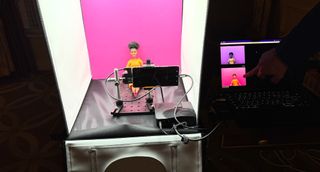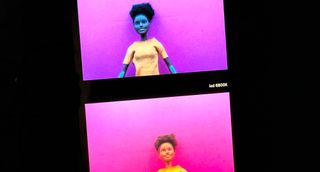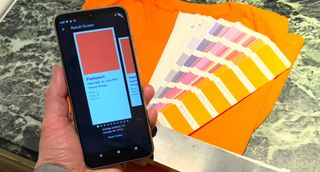Forget Samsung Galaxy S24 Ultra — a true camera phone revolution is coming next year
Get ready for multispectral camera phones

Right now the biggest trend in the best camera phones is AI. Every smartphone maker is using machine learning to make pictures look better via photo processing. And both Google and Samsung are employing generative AI on the Pixel 8 and upcoming Galaxy S24 series to let users do things like move subjects around or fill in backgrounds.
But what if the picture you took looked great the first time, with truly accurate colors and white balance? Spectricity is hoping to make a huge splash in this space, and at CES 2024 it showed off its first multispectral camera in a phone designed to enable “true colors” in smartphone pics.
I know what you might be thinking. Google already made a huge deal about its Real Tone technology in introduced with the Pixel 7 series in 2023. But while impressive, that was designed to only reproduce more accurate looking skin tones. Spectricity is for everything you capture.
The company claims that its S1 multispectral camera can assess colors more accurately than the naked eye. It can sense 16 different wavelengths simultaneously, replacing error-prone AWB algorithms used with RGB sensors. We got our first Spectricity demo last year, but now it has built its tech into a smartphone prototype.

During a demo comparing Spectricity’s camera versus a Google Pixel 7 Pro, both captured an image of a dark skinned doll with pink paper in the background. But Google’s phone struggled to produce accurate colors, and the objects turned different hues in the captured images when the LEDs changed from warm white to neutral white and cool white.

Meanwhile, Spectricity’s shots were much closer to what I saw and they stayed fairly consistent throughout. I do wish they had chosen the Pixel 8 Pro for a more recent example, but the differences were still impressively stark.

In a second demo using a prototype camera phone with Spectricity’s sensor, it snapped a photo of an orange T-Shirt and then looked up that color via an app. Sure enough, it exactly matched the Vibrant Orange color on a Pantone color matching tool.
Sign up to get the BEST of Tom’s Guide direct to your inbox.
Upgrade your life with a daily dose of the biggest tech news, lifestyle hacks and our curated analysis. Be the first to know about cutting-edge gadgets and the hottest deals.
Better looking photos is only one application of Spectricity’s multispectral imaging. It could be used for e-commerce, as well as makeup applications, and it could possibly even help identify skin conditions and diseases.

Spectricity says that it is working with almost every major smartphone manufacturer to test its solution. And while the press release states that this camera "can be in any smartphone within 2 years," Vincent Mouret, CEO of Spectricity, told me that we could see a handset with this camera as soon as 2025.
We can’t wait to test this sensor in a major camera phone to see if it truly lives up to the hype.
More from Tom's Guide
Mark Spoonauer is the global editor in chief of Tom's Guide and has covered technology for over 20 years. In addition to overseeing the direction of Tom's Guide, Mark specializes in covering all things mobile, having reviewed dozens of smartphones and other gadgets. He has spoken at key industry events and appears regularly on TV to discuss the latest trends, including Cheddar, Fox Business and other outlets. Mark was previously editor in chief of Laptop Mag, and his work has appeared in Wired, Popular Science and Inc. Follow him on Twitter at @mspoonauer.
-
mhartman.art "True to life colors" aren't the pinnacle of great photography/videography, I wish people would stop using "true colors" as something of a high metric to acheive.Reply
Yes, obviously you don't want your colors to be putrid, especially the skin tones, but the rest is arbitrary if you're trying to capture a narrative, and relative to the narrative you're trying to tell.
Take any blockbuster movie from the past to current, you will see that colors are NOT "true to life", rather stylized to enhance a told narrative. The reality is true to life colors are generally dull and muted. There's nothing wrong with dialing in a little more saturation and contrast to enhance what is there as a baseline. This is not "cheating". There's no cheating in storytelling, There's just the craft of illusion.

